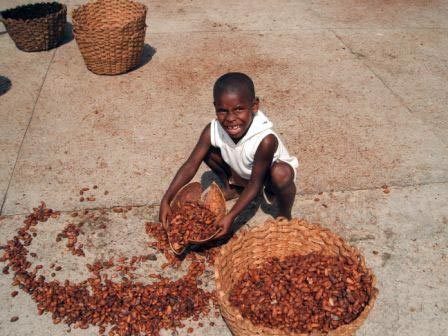Two-faced Chocolate

Chocolate – sweet, savory, delicious, enjoyable, and it comes with an untold story. Often times those who take delight in eating chocolate are unaware of its journey before making it into their hands and stomachs. The chocolate industry is great at marketing, selling, and profiting tens of billions of dollars each year from the cocoa beans used to make the chocolate that consumers enjoy. However, not nearly enough has been done to counteract child slavery, unsafe working conditions, and unfair wages paid to cocoa farmers. For decades, professional reporters, organizations, and informed citizens have shared with the public the value of knowing where and how consumer products originate and are processed. For the purpose of this blog, I want to speak to the child labor and slavery on the cocoa plantations.
In his book Exit, Voice, and Loyalty, Albert Hirschman speaks to how people have the power to influence and persuade companies through exit, voice, and loyalty. Consumers have the power to change and mandate action against child labor and slavery on cocoa plantations around the world. This is a sweet cause to join.
Chocolate and Children
Rose-colored lenses and grey lenses. Chocolate is a sweet treat for some children. For others, it means a harsh life. Chocolate companies are game changers in the lives of different children in opposite ways. For the children on the cocoa plantations, legally or illegally, the chocolate companies have the resources to acquire these plantations or partner with the farmers to ensure that no children are involved. National teens and adults in participating countries should be given an opportunity to earn money for their families and an avenue to help drive local economies. Teen and adult nationals in countries can be taught a trade in growing and harvesting cocoa beans. Possibly, this is one way to crack down on child labor on the plantations. What more can be done to stand up for these children? Chocolate and children should be a picture of something good.
Exit and Voice
The message consumers (a.k.a. “we”) are giving is that they either value children in these conditions or delicious, cheap chocolate more. Consumers need to let their dollars, voices, and feet speak up about better and stronger cocoa planation practices for kids around the world. Emails, Facebook posts, Twitter, and text messages should be sent to chocolate companies to employ stronger accountability measures on cocoa plantations. Around the world, people should send various messages to chocolate companies (stop buying chocolate for a while, host public forums, and get college students onboard to protest) so that children are not exploited, harmed, kidnapped, or forced to work on cocoa plantations. We need to collectively bring reform to industry practices that are hurting our children. Chocolate is sweet, but mistreating children is not. More needs to be done by consumers to send a clear message.
Closing
Chocolate is subjectively a ‘good’ food. And, there are some ‘good’ people that work for chocolate companies. Now, the ‘good’ people in the industry need to stand up, speak up, and put up capital to do more to ensure that the very first step in the cocoa process is just as sweet as the its final destination of human consumption.
Leave a Reply
You must be logged in to post a comment.